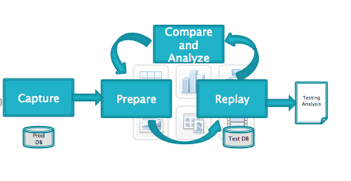I spend a lot of time talking to clients and prospective clients about performance tuning and IT optimization, and the dramatic impact those services can have on cost and efficiency within organizations. But sometimes the best way to talk about the benefits of a particular service is to look at real results.
We recently helped a large client in the healthcare industry on the cusp of implementing a $60 million dollar software program, affecting nearly $3 billion dollars of their business. Suffice it to say, this client wanted to ensure the project was implemented smoothly and was fully optimized to make the biggest impact on their company.
 This project recently completed, and I thought it was a great example of how some of our services at 5Wyre get results for clients. Here’s a basic rundown of the project and its results to help demonstrate why we’re so passionate about performance tuning and IT optimization.
This project recently completed, and I thought it was a great example of how some of our services at 5Wyre get results for clients. Here’s a basic rundown of the project and its results to help demonstrate why we’re so passionate about performance tuning and IT optimization.
Our work for this client was broken down into three distinct and sequential steps:
- Assessment. 5Wyre completed a thorough readiness assessment that included risk curves based on conversations with the client, evaluating how well the application suite was tested, how well the system would be monitored once in went into production and how the software was written. The assessment also looked at the infrastructure from a monitoring perspective and a back-up resource perspective as well as the client’s in-house application knowledge.
- Remediation. After reflecting on the significant risks identified in the report, the project launch was postponed. To remediate the issues determined in the readiness assessment, manage the application/operations monitoring and test the remediation project plan, 5Wyre deployed a six-person team comprised of experienced application, data and infrastructure architects to work with the client team. The 5Wyre team worked directly with the project lead to manage the remediation effort, lead the application and operations monitoring track of the remediation project plan and coordinate the testing track, which included the definition and completion of true regression, performance and parallel testing of the project.
- Performance Tuning/IT Optimization. While working in remediation, 5Wyre architects were assigned specifically to performance tuning, ensuring that the software was performing to its maximum potential. Our performance tuning efforts encompassed three main areas:
- Software testing – Using our unique “black box” approach, we fully analyzed the software to determine what areas were causing lags in performance.
- Hardware environment change – 5Wyre testing determined that software performance could be dramatically improved with different hardware. Before we could make any changes to the software, an overhaul of their hardware was implemented.
- Analysis and tweaking of software – Once the hardware overhaul was completed, 5Wyre architects moved forward with comprehensive testing of the software to determine what additional steps could be taken for enhanced performance.
The Results
Prior to working with us on the project, the client wasn’t accomplishing their desired tasks during nightly batch processing. After 5Wyre’s team conducted performance tuning and IT optimization, the software completes every task and report needed and expected during the evening…in 5 hours. Every time. Consistently.
Our clients constantly tell us that they want consistency and reliability. That’s what we were able to deliver here – with a significant cost savings and increase in productivity for the client.
Through performance tuning and IT optimization, we were also able to reduce the duration of contract jobs that had been running 21 days. Following 5Wyre’s services? They were reduced to three days. A reduction of 86%!
While these results are specific to this client and project, our team here at 5Wyre has the robust skill set and experience to assess and devise a plan for any company and industry. We design our solutions to help you maximize your IT investment. Plus, we truly enjoy getting such incredible results for our clients.
Do you have an IT optimization success story? We’d love to hear it – feel free to share it in the comments section below.
Image courtesy of FreeDigitalPhotos.net/twobee







